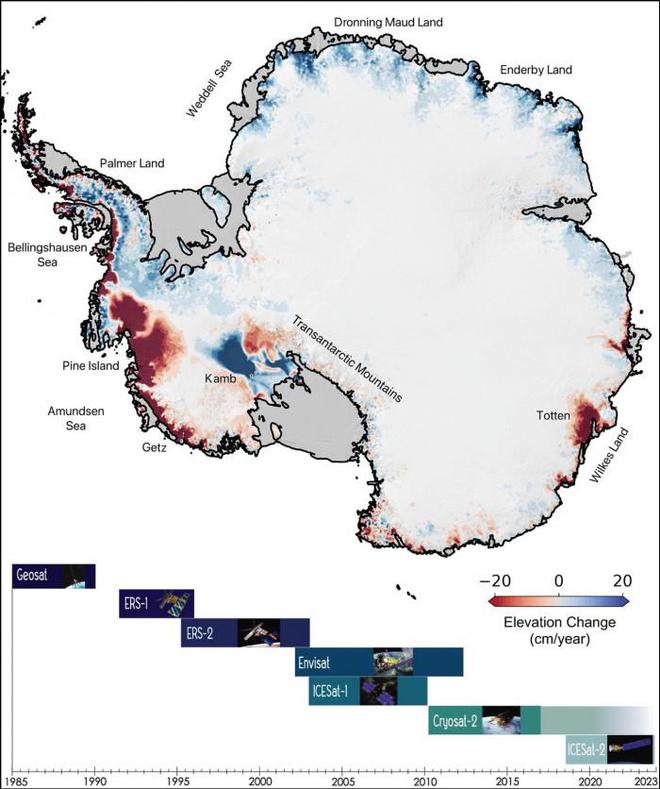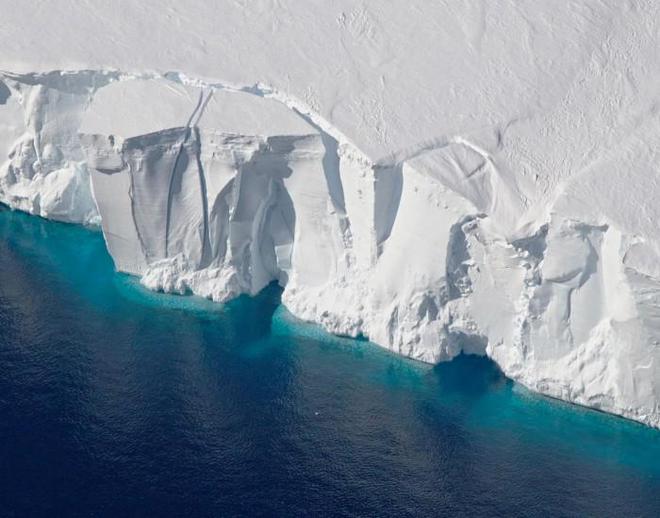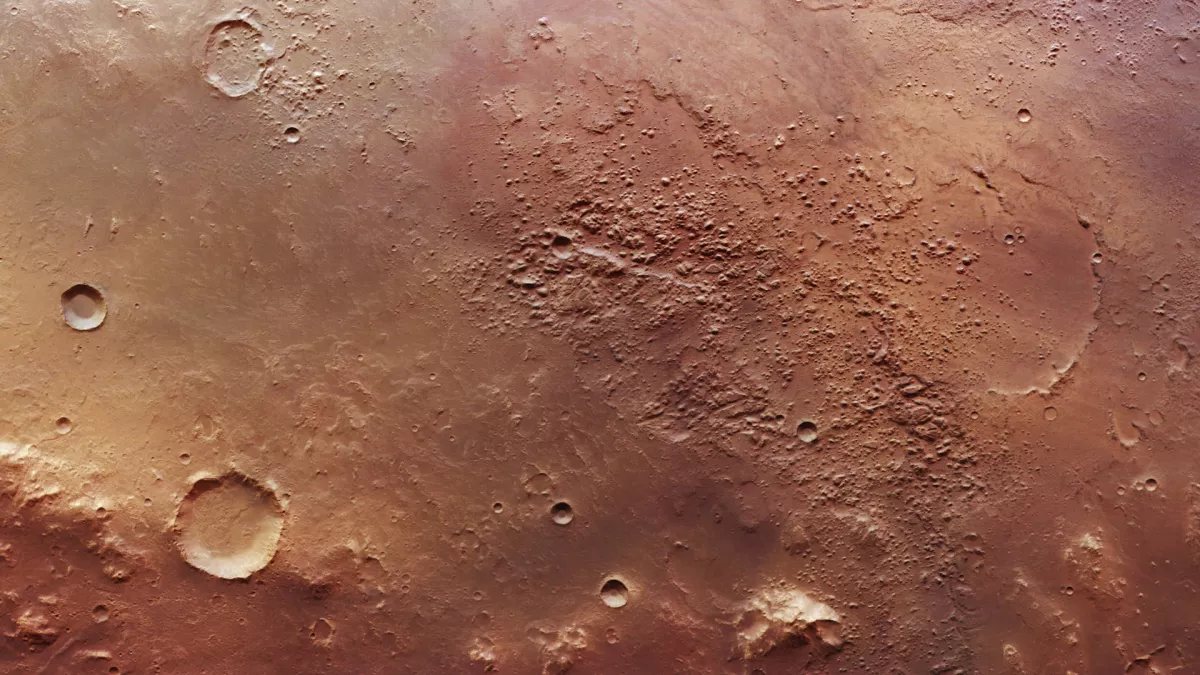A recent study published in the journal Nature charts how iceberg calving — the breaking of ice at the front of a glacier — has transformed Antarctica’s coastline over the past 25 years. Scientists have found that icebergs at the edge of the ice sheet are shedding faster than ice is being replenished. The surprising discovery doubled previous estimates of ice loss from Antarctica’s floating ice shelves since 1997, from 6 trillion to 12 trillion tons. Ice loss from crushed ice weakens ice shelves, allowing Antarctic glaciers to flow more rapidly into the ocean, accelerating the rate of global sea level rise.
Another study, recently published in the journal Earth System Science Data, shows in unprecedented detail how the thinning of Antarctic ice as seawater melts has spread from the outer edge of the continent to the interior, over the past decade , the ice cover in the western region of the ice sheet has almost doubled. Together, these two supplementary reports provide the most complete view yet of how this frozen continent is changing.
“The edge of Antarctica is collapsing,” said JPL scientist Chad Greene, lead author of the iceberg calving study. “And when ice shelves shrink and weaken, the continent’s huge glaciers tend to accelerate and increase the rate of global sea level rise.”
Most of Antarctica’s glaciers flow into the ocean, where they end up as floating ice shelves that are up to 2 miles (3 kilometers) thick and 500 miles (800 kilometers) wide. Ice shelves are like supports for glaciers, keeping ice cubes from simply slipping into the ocean. When ice shelves are stable, they have a natural cycle of ice erosion and replenishment, maintaining their size fairly consistently over long periods of time.
However, ocean warming has been destabilizing Antarctica’s ice shelf in recent decades as it melts from below, thinning and weakening it. Although satellite altimeters measure the thinning process by recording changes in ice height, prior to this study, there had been no comprehensive assessment of how climate change might affect tsunamis around Antarctica.
In part, satellite imagery is challenging to interpret. For example, Greene said: “You can imagine looking at a satellite image and trying to figure out the difference between white icebergs, white ice shelves, white sea ice, or even white clouds. It’s always been a difficult task. But We now have enough data from multiple satellite sensors to see clearly how Antarctica’s coastline has evolved in recent years.”
In the new study, Greene and his colleagues synthesized satellite imagery of the continent in visible, thermal infrared (thermal) and radar wavelengths since 1997. Combining these measurements with an understanding of ice flow from NASA’s ongoing glacier mapping project, they mapped the edge of the ice shelf along 30,000 miles (50,000 kilometers) of Antarctica’s coastline.
Because the loss from the ice has greatly outstripped the natural growth of the ice shelf, researchers believe that Antarctica is unlikely to return to its pre-2,000-year range by the end of the century. In fact, the findings suggest that larger losses are to be expected. All of Antarctica’s largest ice shelves appear to be poised for a major ice breakup event within the next 10 to 20 years.

In this supplemental study, JPL scientists combined nearly 3 billion data points from seven spatial altimetry instruments to produce the longest continuous dataset of changes in ice sheet height — an ice loss Metrics – started back in 1985. Using radar and laser measurements of ice height, accurate to within centimeters, they produced the highest-resolution map of monthly changes in ice loss ever recorded.
Hundreds of meltwater lakes are hidden beneath Antarctica’s vast ice sheets. Using a powerful laser altimetry system in space, NASA’s Ice Cloud and Land Elevation Satellite-2 (ICESat-2) is helping scientists “see” under the ice.
Unparalleled detail in the new record shows how long-term trends and annual weather patterns affect the ice. It even depicts the rise and fall of ice sheets, as lakes beneath glaciers often fill and empty. The study’s lead author, JPL’s Johan Nilsson, said: “Subtle changes like this, combined with further understanding of long-term trends from this set of data, will help researchers understand the processes that influence ice loss and thus Improve future estimates of sea level rise.”
Synthesizing a large archive of measurements into a single, high-resolution dataset took years of work and thousands of computing hours on NASA servers. According to Nilsson, it was all worth it. “Condensing the data into something more broadly useful could bring us closer to the major breakthroughs we need to better understand our planet and help us prepare for the future impacts of climate change.”




GIPHY App Key not set. Please check settings